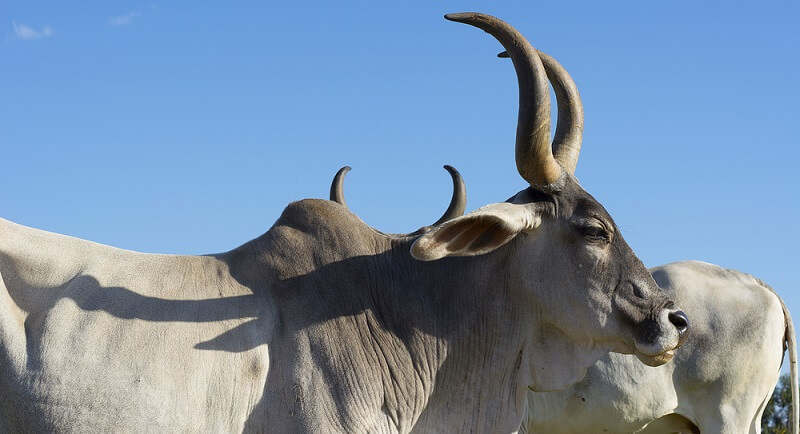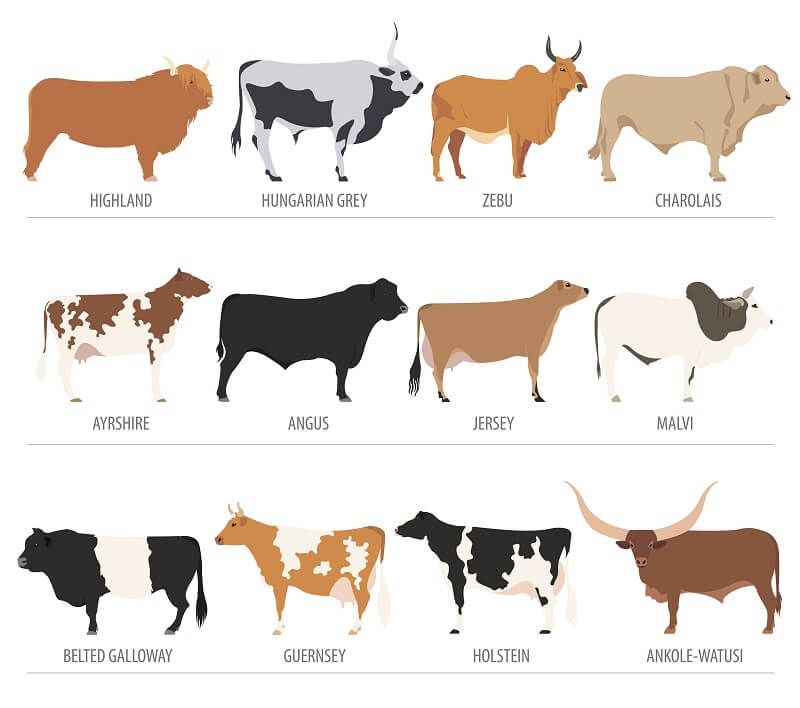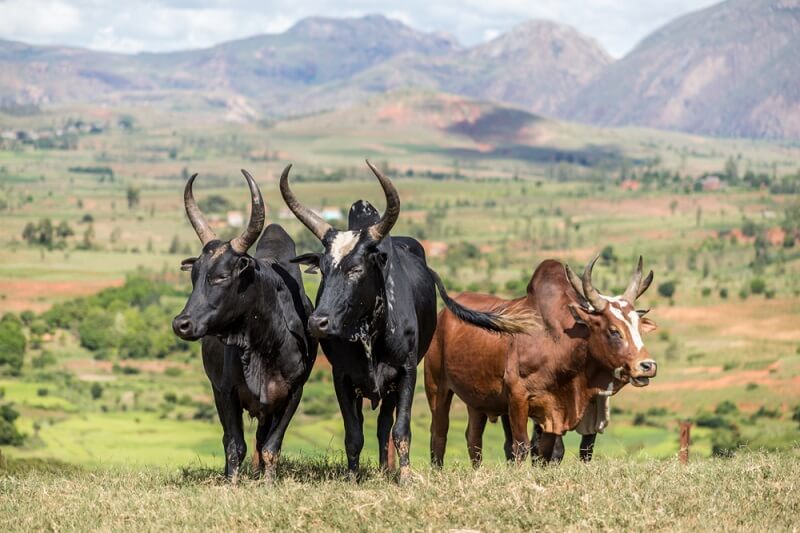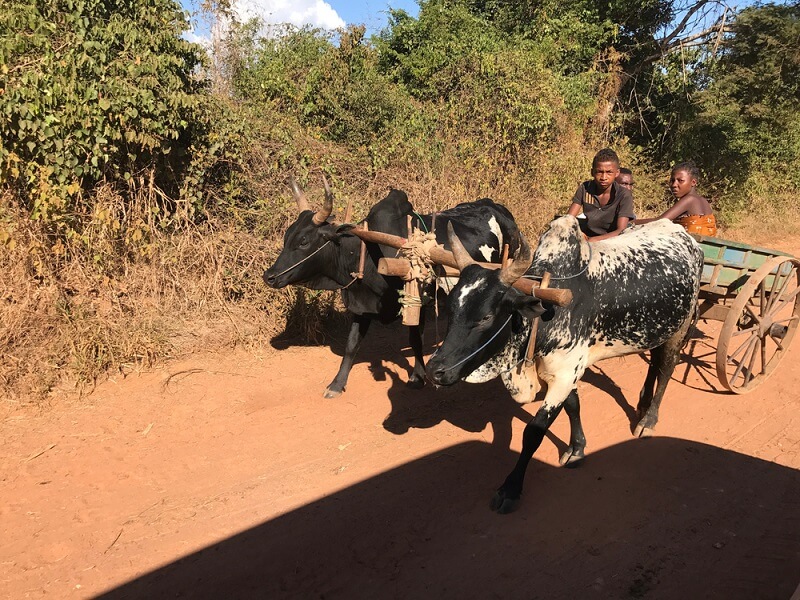
| Kingdom | Animalia |
| Phylum | Chordata |
| Class | Mammalia |
| Order | Artiodactyla |
| Family | Bovidae |
| Genus | Bos |
| Species | Bos taurus indicus |
| Niche | Domesticated |
| Length | Up to 5.2 ft (1.58 m) |
| Weight | Up to 2,400 lbs (1,080 kg) |
| Lifespan | About 20 years |
| Social Structure | Herding / Domestic |
| Conservation Status | Least Concern |
| Preferred Habitat | Domestic |
| Average Number of Offspring | 1 |
| Main Prey Species | Grasses |
| Predators | Humans, sometimes tigers, crocodiles |
The Basics
Zebu are a species of cattle closely related to the very common European cattle that are found in most parts of the world. Zebus (sometimes called Brahman cattle in the U.S.) are easily spotted due to the large hump on their front shoulder and their large, upward-facing horns. The Zebu is part of the Bos genus, which contains many species of domestic cattle.

Though domestic cattle represent many different species and even special varieties within a species, many of the species within the Bos genus can interbreed. Therefore, combinations of all the above cattle breeds are technically possible.
Zebus have a number of adaptations that make them heat-tolerant, including short hair, large ears to dissipate heat, and the ability to tolerate intense sunlight. Due to this high heat tolerance, the zebu is a choice draft animal for many farmers across the world, from Africa to Brazil. Zebu generally have a pleasant disposition and the miniature zebu is sometimes kept as a pet!
The zebu has been present in art for more than 4,000 years, and there are now over 75 specific breeds across various regions of the world.
Interesting Insights from the Zebu!
The zebu may be one of many breeds of domestic cattle, but that doesn’t mean it doesn’t have it’s own interesting connections to the rest of biology! The zebu is a perfect example of many higher biological concepts.
Not A Camel’s Hump
Like camels, zebus also support an enlarged hump on their back. However, these two humps have very different compositions. A camel hump is made up of mostly fat cells that store water and energy for long journeys through the desert. The zebu hump is made up of muscle and enlarged vertebrae between the shoulder blades. So, scientists are unsure of the hump’s exact function and evolutionary benefit of the zebu’s hump.
However, camel and zebu humps both contain a high number of blood vessels that weave through the tissue. Blood vessels can dissipate heat through the skin, suggested that the hump is an adaptation against the heat. It has also been suggested that because humps are larger in males that the hump may be a sexually selected trait. Since zebu are a domesticated breed, it is highly likely that the hump is simply an exaggerated feature that farmers have selected for over time.

In many parts of the world, the hump is considered highly desirable as a food product – making this theory more likely. Due to a large number of vessels in the meat, consumers say it is more tender than other cuts.
Human Evolution and Domestic Animals
The zebu – and its docile temperament – are a perfect example of the evolutionary forces that humanity faced as it spread across the globe. In fact, the earliest human civilizations are traced to places that had easily-domesticatable animals. In fact, early ancestors of the Zebu likely led to the establishment of human settlements across India and Asia.
The first instances of writing and clearly organized human societies come from China and the Mesopotamian regions. These regions, unlike parts of Africa that human beings originated in, had several species of animals that were very docile and were relatively easy to domesticate. While parts of Asia, Europe, and the Middle East had access to animals like the water buffalo, auroch, and other easy-to-manage species – Africa has creatures like the Cape Buffalo and Hippopotamus that still kill many people a year.
The first large civilizations in South America also have their roots in plant and animal domestication. While the Inca and Mayan civilizations did not have huge species like the auroch to domesticate – they are responsible for alpacas, llamas, and the guinea pig. These civilizations were likely built on contributions from these domesticated animals, and the process of domestication itself helps explain why certain human populations never grew beyond certain limits.

